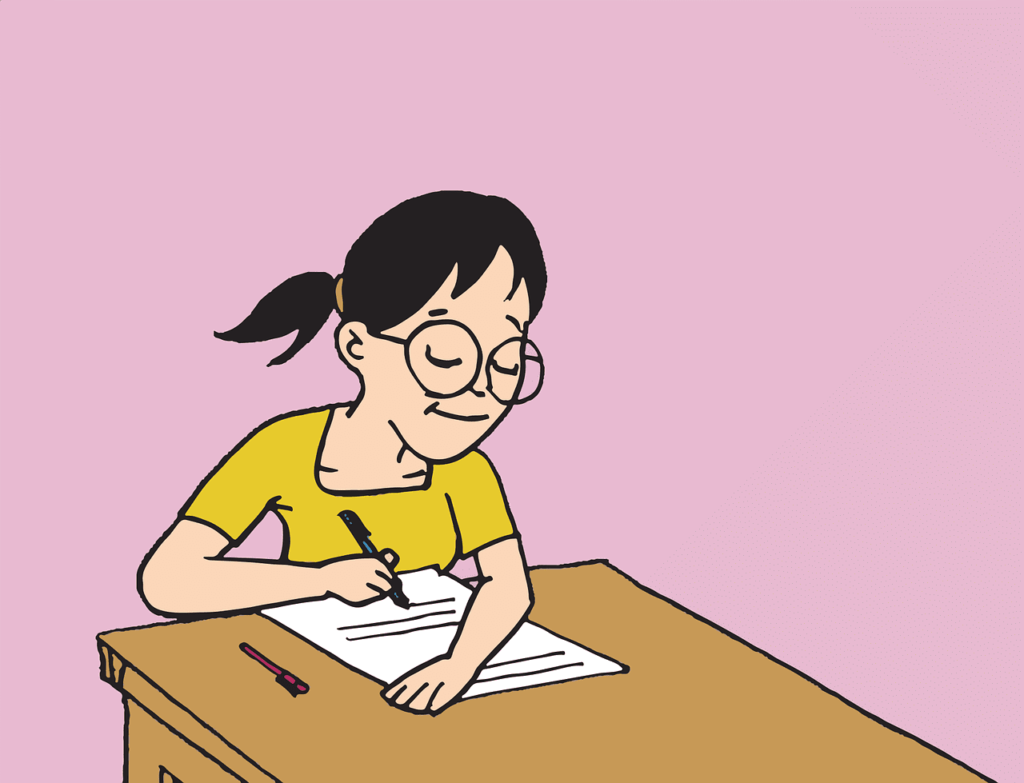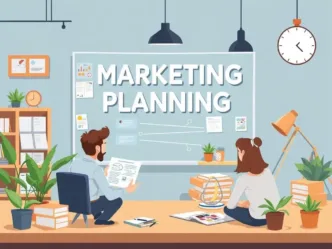How to Write Perfect Title Ideas for Post and Illustration Essay? When you are asked to select or create your essay title for a piece of work, such as a dissertation or thesis, you may suddenly realize that what might seem like greater freedom is a challenge instead. This is perfectly understandable as most learning is guided. For the majority of your academic life, you will have been given Title Ideas on which to write an essay.
How to Write the Perfect Post Essay Title Ideas?
Writing an essay will become a skill that you have acquired over the years by developing a methodology of response. Now you are being asked to ‘fly solo’, so to speak, and you may find yourself with a blank sheet of paper not knowing where to begin. How do you choose a topic or word to create an interesting title? Don’t worry, we’re here to provide some guidelines that can be applied to help you to choose Title Ideas that will be interesting, and appealing, to both you and the reader.
- Focus on the type of essay you are writing – Decide on the type of essay you are going to produce. This is important as, for example, a critical essay can be very different from a narrative essay or a research essay.
- Next, jot down your ideas related to the main theme of the essay. This allows the ideas you have to help generate a title. In most cases, this will give you strong Title Ideas that engage with your opinions.
Choosing your Title Ideas for an academic essay or one that requires researching a topic
Most academic essay titles have an implicit or explicit question. In other words, they will ask you, directly or indirectly, to consider a topic.
An example of an explicit question in title ideas might be:
‘Do you agree that Victorian Literature is reflective of the era in which it is set? Discuss this concerning works by several authors of the time’.
If the same essay were expressed implicitly it might look something like this:
‘Victorian Literature reflects the era in which it is set’: discuss this concerning chosen authors of the era.
You can see that the basic content of both titles is the same and the same sort of essay will be expected in response to both. However, the direct question gives the writer a good starting point in responding by providing a point to argue “for or against”. It is therefore always worth considering including a question in your essay Title Ideas as the response will take you a long way towards the formulation of your thesis statement. You need to also decide whether or not your title ideas have more than one part to them, as the above do.
Similarly, if you are intending to focus on a particular aspect of a topic, you need to include this as a keyword in your Title Ideas. You will be very familiar with this process, but again, in reverse. You will be used to finding the keywords to address when writing an essay as identifying these assists you to answer the question correctly. Now you will be using these words yourself to focus your essay and help define the points you want to make. Some frequently used keywords are (but are not limited to):
- Discuss
- Compare
- Analyze
- Contrast
- Evaluate
- Assess
Questions that include these words explicitly define the type of essay that is to be written, examples might be something like:
‘Compare the effectiveness of two different writers on the creation of the welfare state in Britain.’
‘Evaluate the contribution made to the study of psychoanalysis by the early work of Sigmund Freud.’
In both of these questions you can see that the keywords used help you to focus attention very precisely on the particular aspect of the topic you intend to write about, and, as with the inclusion of a question, assist with the formulation of a thesis statement.
Choosing a title for an essay that doesn’t involve research
You might likely be asked to write Title Ideas for a descriptive essay, an imaginative piece, or a personal piece. Climate Change Essay for Students in 1100 Words; It is probably true to say that these areas of writing are more likely to involve you in the process of evolving a title, since they are, in a sense, more creative.
If you are asked to create a title of this sort, try to write a list of your ideas about the topic because these might generate a title for you. This time, however, your focus needs to be very much on capturing the attention of your reader to make them want to read on. Examples of Title Ideas that might apply to each of the above are:
- Descriptive title – ‘A Paradise on Earth’ (this invites the reader into not only your descriptive piece but also your conception of what constitutes ‘paradise’ and how this differs from the reader’s own)
- Imaginative title – ‘The World in Fifty Years’ (this again encourages engagement with the reader’s ideas and gives you scope to base your imaginative ideas on things around you)
- Personal title – ‘The Most Difficult Decision I ever made’ (here you tell the reader a lot about yourself in the title and encourage them to proceed by stimulating interest).
Remember that the main objective of every essay Title Ideas is to help you to examine a topic of your choice and to engage the reader’s attention sufficiently to make them want to read more!
How to Write an Illustration Essay Ideas?
An illustration essay is a variant of the basic essay format. In other words, it follows the format:
- Introduction (including the ‘thesis statement’)
- Main body (divided into separate but connected paragraphs)
- Conclusion (summarising your argument).
The difference is that in an illustration essay, the evidence is largely provided by the inclusion of examples, or ‘illustrations’, to support your argument; in many ways, it is similar to a narrative essay. Basically, in an illustration essay, you are inviting your reader to picture, via your ‘illustrations’, the argument’s effectiveness.
How should I begin to write an illustration essay?
The best way to begin an illustration essay is to study the topic you have been given to address as this will help you to develop a strong thesis statement in response. If you are asked to select your topic for an illustration essay, try to choose one about which you already know a great deal or will be stimulated to research because of your interest in it.
This is important because as the focus of an illustration essay is the employment of examples of various sorts, it helps a great deal if the topic naturally generates illustrations in your mind. The essay topic should be sufficiently engaging to attract and hold the reader’s interest, much in the manner of a magazine or newspaper article. Think of yourself as competing, in the same way as professional writers do, for the attention of your reader and this will help you to come up with the kind of topic that is most suitable for your illustration essay.
How should an illustration essay develop?
Following the basic essay structure (as above) you then move into the main body of the illustration essay. If, for example, we take the simplest essay structure of the five-paragraph essay, then you have one paragraph for the introduction, three for the main body, and one for the conclusion; each paragraph of the main body of the essay should address a different aspect of the central theme. Do You Need Artificial Intelligence Benefits for your Online Business; Before beginning to write, as always, you should have made an essay plan, and within this include where your illustrations are going to be used.
There are three main types of illustration:
- Specific illustrations
- Typical illustrations
- Hypothetical illustrations.
Each of these will be chosen about its applicability to the aspect of the paragraph topic under discussion.
What does each of these illustrations mean?
Briefly, the three types of illustrations given above refer to different definitions of illustrations that might be used as evidence in an illustration essay:
- The specific illustration is an example from personal experience; for example, if you were to write about accidents, you might give an example of an accident that occurred to you to illustrate how such an accident might occur and be dealt with.
- The typical illustration is a generic example, applicable to many on a given topic; again, using the example of the accident as a topic, a typical illustration would be the fact that most accidents happen at home.
- The hypothetical illustration is, as its name suggests, an invented illustration; if the topic were accidents, as stated earlier, then a hypothetical example might be to introduce the idea of circumstances under which an accident might take place.
These are very simplistic examples that would need to be modified according to what topic, or aspect of a topic, is under discussion.
How should I decide which illustrations to use?
When deciding on the illustrations you are going to use, bear in mind the fact that each has relative merits and drawbacks:
- The specific illustration has the merit of having been experienced thus bearing authenticity; however, the drawback is that it carries with this the limitations of subjectivity.
- The typical illustration has the strength of being easily related to by the reader but the weakness of being too easily flawed by its generality; in other words, it is impossible to say how well a typical illustration can be fitted to every case.
- The hypothetical illustration is the weakest of the three because it has no grounding in fact and although this does give it extensive flexibility, it should only be used when no other illustrations seem to be applicable or as an addition to one or other or a combination of the other two.
It is always best to decide on precisely which examples and/or types of examples will be used where and how in your illustration essay before you begin to write, as this will help you to create a strong, well-illustrated argument throughout. The quality and relevance of the illustrations are the foundation of an illustration essay, therefore the illustrations should be used frequently and appropriately right through your essay much as you would use evidentiary support in a standard academic essay. It is a good idea to vary the length and depth of your illustrations to add interest and variety to your argument depending on relative complexity at different points in your essay.
How should I conclude my illustration essay?
The conclusion of an illustration essay follows much the same construction as the conclusion of any academic essay. In other words, you need to draw together the main points you have made and produce a synthesis of the thesis. You should also try to suggest further discussion of the topic which might be needed in the future so that you do not imply to the reader that you are inferring that you have covered every aspect of the topic or its illustrations in your work.
Try to pre-empt possible objections to the arguments and/or illustrations that you have employed by suggesting an ‘open-ended’ debate simply drawing to a temporary impasse. Remember that the principal framework of an illustration essay is its examples and you are trying literally to build a picture of the topic under discussion by making it as interesting, informative, and well-evidenced as possible.
Reference; It is Retrieved from https://www.ukessays.com/guides/essay-titles.php?vref=1 and https://www.ukessays.com/guides/illustration-essay.php?vref=1








